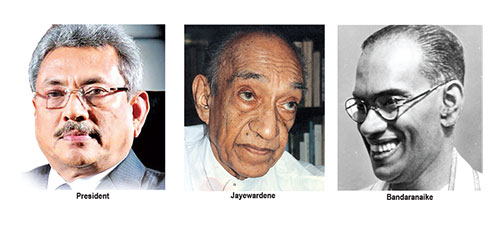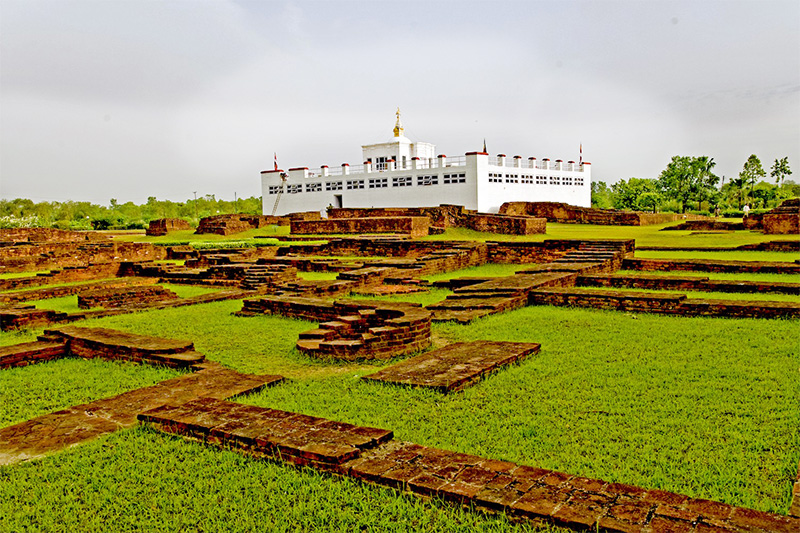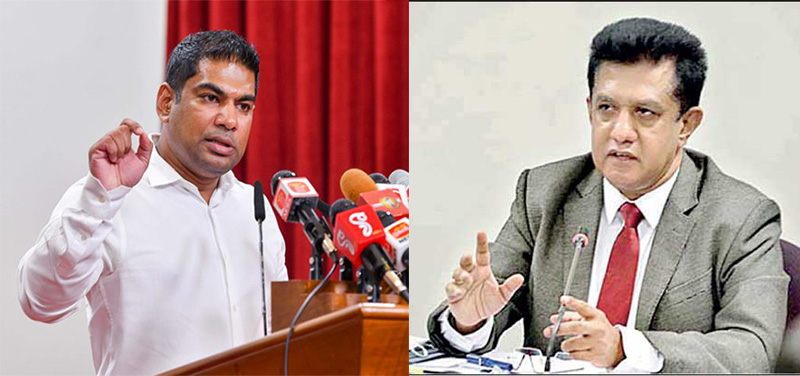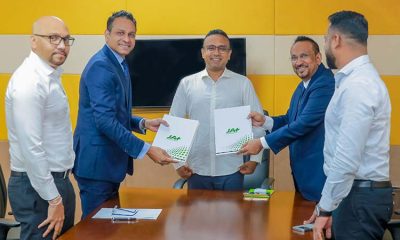Opinion
Constitution making:

A layman’s view
by ROHANA R. WASALA
‘At least since Rousseau’s Social Contract and the end of the divine right of kings, the state has been seen as party to a contract with the people – a contract to guarantee or supply the necessary order in society. Without the state’s soldiers, police and the apparatus of control, we are told, gangs or brigands would take over our streets. Extortion, rape, robbery and murder would rip away the last threads of the “thin veneer of civilization.”’ – Alvin Toffler, Powershift, 1990.
The late Alvin Toffler (American writer, journalist, educator, and businessman) says this while reflecting on the nature of power as one of the most basic social phenomena. ‘Power……implies a world that combines both chance, necessity, chaos and order.’ According to him, we humans ‘share an irrepressible, biologically rooted craving for a modicum of order in our daily lives, along with a hunger for novelty. It is the need for order that provides the main justification for the very existence of government’.
Sri Lankans are currently experiencing, in the raw, a taste of the evils that Toffler says the absence of order would breed, which makes constitution making interesting for them. But what is a constitution? Google offers a simple definition of the term: ‘a body of fundamental principles or established precedents according to which a state or other organization is acknowledged to be governed’.
Now, Professor Jayadeva Uyangoda (‘A very wrong approach to Constitution-making’/The Island/September 29, 2020) opines that the proposed 20A has ‘several major defects’. One key fault, according to him, is that the approach adopted for drafting the amendment is ‘very wrong’. JU offers a number of reasons to explain this alleged wrongness of the ‘approach’: the ‘sponsors and framers’ (I suppose the phrase means the politicians and the legal experts behind the drafting of 20A) refuse to learn ‘constructive lessons from past constitutional reform experiments’, but they have learned some ‘partisan, narrow-minded, politically short-sighted ones’. What he probably means by this becomes clear (not clear enough though) in the rest of his article, but it is doubtful whether his sense of right and wrong in the context is shared by many outside the now diminished anti-nationalist coterie, who occupied the parliament for four and a half years and hexed it with the controversial 19A.
It is not necessary to read further into JU’s article to be able to infer where his own inexcusable biases lie. He is obviously in favour of 13A and 19A forced on the nation from outside, and is against the present government’s sincere effort to remove the obstacles placed on its path by the departing yahapalanaya through its ill-conceived constitutional mixed bag that is 19A, where what is bad is by choice, and what is good is by chance. This is not to argue that the new 20A is perfect in comparison. I share many objections raised in different quarters against the proposed 20A, but I believe that the moot points will be satisfactorily sorted out by the present leaders before they manage to get it through parliament.
The Opposition critics of 20A quite well know that it is, after all, only a stopgap measure to clear the way for the unhindered implementation of the government’s development plans. The government will introduce a completely new Constitution within a year or two. JU’s advice as a political scientist will come in handy then.
The proposed 20A is not an arbitrary piece of legislation that the government is introducing behind the back of the people. There is considerable opposition to some of its articles even within the government ranks. Unlike in the case of 19A, the passage of 20A will be a democratic, above-board affair. The Minister of Justice on behalf of the government issued it as a draft bill for public view and review in all three languages on September 2, 2020. The document clearly specifies what is to be amended, repealed, or replaced. The yahapalana constitutional fraud in the form of 19A is not being repeated. Over this four-week period, some thirty-nine petitions have been filed challenging 20A’s constitutionality before the Supreme Court and they were being heard for the third day (October 2) by a bench of five judges, at the time of writing. The government has already declared that it will abide by the court decision by duly adjusting its response to it. JU’s alarms and warnings are uncalled for.
By the phrase ‘past constitutional reform experiments’, JU must be referring to the making of the first and second republican Constitutions (of 1972 and 1978 respectively) and the substantial number of opportune as well as ad hoc amendments introduced by successive governments since, some of them questionable and controversial, where 19A stands in a class by itself as the best example of the worst type of constitutional reform introduced in Sri Lanka to date. What prompts him to describe them as experiments is probably the fact that he is a political scientist with his indispensable toolkit of academic analysis. My interest as a lay citizen, modestly informed of the original construction and subsequent reform of a constitution, is concerned with how good it is going to be for the largest number of the people of the country, as its supreme law, in the context of the more or less stable social and political realities that are prevailing.
As a Constitution is not holy writ, it is open to appropriate amendments from time to time, in compliance with the will of the people, as and when these realities change; a constitution specifies the legal way to reform or replace it as the case may be. The current 1978 republican constitution as amended up to 2015 (Chapter XII/Articles 82-84) specifies the procedure for amending or repealing the constitution. The people whose memory of the yahapalana misadventure is still fresh are anxiously aware of the necessity of passing the 20A.
Contrary to what JU asserts, the political leaders and the legal luminaries responsible for drafting the proposed 20A, have not forgotten the constructive lessons left by their respective predecessors in the form of Sirimavo Bandaranaike and Colvin R. de Silva (1972), and J.R. Jayewardene and J.A. Wilson (1978). Both Bandaranaike and Jayewardene cared about the country, the people, and the culture. Both displayed firm leadership in governing, and a high level of intellect in statecraft. Sirimavo Bandaranaike had her native wit, and Jayewardene possessed a good education. In April 1971, Bandaranaike nipped the JVP terrorism in the bud, not without some violence, though, that she never intended. Opposition leader Jayewardene approved of her actions, saying, ‘yes, a government must rule’. For her courage, firmness, and composure, she was described then as the only male in her cabinet. The contribution of the inspiration provided by Bandaranaike’s political leadership to the making of the first Republican Constitution, the principal architect of which was de Silva, must have been immense and indispensable. Later, hadn’t Jayewardene got Wilson to write the powerful institution of executive presidency into the second republican constitution (1978) as the main anchor to the unitary state, the sovereign Sri Lankan republic that Bandaranaike and de Silva created for the people would have disintegrated and drifted into wilderness and oblivion by now.
Back to the point.
The second alleged defect that JU asserts, without any evidence to support his opinion, is that ‘the framers of the 20A are not motivated by the broader democratic interests of all Sri Lankan people, but the ‘political self-interest’ (of someone or group that JU avoids mentioning). A third defect, JU identifies the Amendment’s supposed lack of ‘a democratic formative framework relevant to our society and its own progressive-modernist legacies of constitutionalism .. (together with the fact that).. it builds itself on one or two dreadful and destructive experiments of constitution-making in the recent past’. This is as close to clear as I can get in interpreting JU here. To illustrate the ‘one or two dreadful and destructive experiments of constitution-making in the recent past’, I think, he draws upon what he, assuming a kind of arbitrary academic license, calls the ‘relatively long history of unmaking, making, and amending constitutions’ that includes the 1972 and 1978 exercises on the one hand, and the 1978C and 18A on the other. JU’s adjectives ‘dreadful and destructive’ could be justifiably applied to the passage of 19A and other such ‘experiments’ in constitutional reform, as contained, for example, in Chapter IV of the Constitution of the Democratic Socialist Republic of Sri Lanka (As amended up to 15th May 2015) (Revised Edition – 2015) issued by the Parliamentary Secretariat. Chapter IV – Language covers Articles 18-25. One is bewildered by what the crafty, ill-meaning, ‘sponsors and framers’ have from time to time done to degrade Sinhala in its official status with the uncomprehending concurrence of some self-seeking Sinhala MPs in the House. This, of course, would be an iconic piece of constitution-making for a theorist with one’s head in the clouds.
The practical reality is that the operative meaning of any Article (whether this is legally contested or not) is implicitly embodied in the English text (though, according to the present constitution Sinhala and Tamil are both official languages, while English is the link language.). So, it is vitally important to translate the draft document that is the Constitution into precise, unambiguous, formal and legally acceptable and uncontestable Sinhala and Tamil. I detected a couple of stark discrepancies between the original English draft and the Sinhala translation (not relating to the particular context – Chapter IV – mentioned above) when I made a very random comparison between the two versions while researching an article at the time, but I don’t remember whether I dwelt on the subject long enough for it to be taken notice of by the reader as something important, though beyond the central scope of that article. Apart from this, those sufficiently informed did not fail to see how some Tamil lawmakers wanted to openly hoodwink the Sinhalas with the word ‘akeeya’ stripped of its intended original meaning of unitary, but falsely insisting that the English term ‘unitary’ was not its equivalent and was not suitable as a translation, and started talking about an ‘Orumiththa Nadu’, reminiscent of Tamil Nadu. How the question which version should prevail in case of an incongruence between the Sinhala and Tamil texts should be resolved, I can’t remember having been discussed. But the last item (58) of the published draft of 20A runs: ‘In the event of any inconsistency between the Sinhala and Tamil texts of this Act, the Sinhala text shall prevail.’
Having outlined the lessons to be learnt from constitution-making, -unmaking, and -reforming exercises up to 18A, JU moves on to the many lessons that he thinks may be drawn from the ‘much maligned’ 19A. He identifies four key lessons. The first lesson he mentions is that wide public consultation is useful, and helps ‘improve the level of democratic health in the polity’. I cannot agree with him that this was true about the drafting of 19A. It was claimed that the constitutional experts including Jayampathy Wickremaratne, presumably its principal drafter, toured the country meeting with individuals and representatives of many minority civil groups during a short period of two or three months. They had to rush the job, they said, as they were in a hurry to finish it within a stipulated time frame. About two thousand people were consulted nevertheless, they claimed. It was obvious that they roamed the country making it their main aim to pay more attention to the minorities that they had decided were discriminated against by the majority Sinhalese, as they wanted the meddling foreign powers to believe in order to justify their interventionist excesses in the internal and external politics of the country. Meanwhile they paid only symbolic attention to the Sinhalese majority. Wickremaratne, the chief architect of the fraudulent document, is now rumoured/reported to have found or is seeking political asylum in Australia or somewhere (though there is absolutely no possibility of his being targeted for persecution in Sri Lanka). He has reportedly admitted that 19A is problematic.
The second lesson that JU asserts he can learn from the making of 19A is that it is ‘better to build consensus across all political parties in Parliament for a major amendment or a new Constitution’. If he means that 19A set a negative example of that principle, then he has a case. But in actuality, 19A destroyed the burgeoning interparty consensus in Parliament and the growing intercommunal goodwill in the broader society that the MR government achieved in the wake of victory over terrorism. It was because of this that ‘for partisan political reasons, some might later withdraw from the consensus’ as JU laments.
I agree with JU on the third lesson he derives from his seemingly iconic amendment, which is that ‘If the consultation and consensus-building in constitution-making is not politically managed with clarity of purpose, the overall goals of the constitutional compromise may run the risk of producing a constitutional scheme with potentially harmful internal anomalies and contradictions’. Yes, in other words, 19A is a very good illustration of a very bad constitutional amendment.
The fourth lesson that 19A offers, according to JU, is that ‘a democratic constitution-making exercise today needs, more than ever, an unwavering political leadership to champion it through to the end by innovative and imaginative democratic means’. In my opinion, this is what the pre-2015 government achieved. 19A, by dismantling it, demonstrated how ill the nation fared in the absence of such unwavering, innovative, and democratic leadership. Then, JU starts chewing his own tail, by suggesting a ‘paradoxical’ reason: ‘Alternatives to democracy are also competing with democracy, with enormous material resources, to gain popular support and loyalty through democratic means. In this age of right-wing populism, media-manufactured popular consent and manipulation of public perceptions through information pollution, post-democratic alternatives tend to gain easy currency and public legitimacy’. Frankly, I can’t make head or tail of this, but it makes me wonder whether JU is trying to make light of the very real persecution of the majority community that is hardly recognized by most mainstream politicians, who feel obliged to find refuge behind political correctness.
Opinion
The Fox Hill tragedy: Lessons to be learnt

BY Dr B.J.C.Perera
Specialist Consultant Paediatrician and Honorary Senior Fellow, Postgraduate Institute of Medicine, University of Colombo, Sri Lanka.
It was indeed a catastrophe of epic proportions that occurred at the Fox Hill Supercross 2024 car racing event on 21 April 2024 in Diyathalawa. There were fatalities amongst the onlookers as well as some of the track staff and major injuries sustained by the spectators when a couple of cars went completely out of control at high speed. Seven died including a child and four Flag Marshals. There were 23 people injured, some quite severely. They were evacuated to the Diyatalawa Hospital. There probably were many contributory factors including poor visibility due to clouds of dust being made to spring up by the speeding cars. What we saw over the television screens were images of a kind of carnage that caused unbelievable chaos in the racing track itself, as well as the surrounding spectator areas. To compound matters further there was no worthwhile emergency response efforts and medical backup when the calamity occurred and some of the injured were carried away from the scene by other spectators in a most unsatisfactory and potentially harmful manner. It is generally not well appreciated that improper carrying of the injured can do more harm than good in such instances. People with neck and spinal injuries could be maimed and paralysed for life by such inappropriate transport of the afflicted.
All sporting events, especially those involving high-speed activities like car races, are exhilarating spectacles that draw crowds from far and wide. However, amidst the excitement, the thrills and even the spills, ensuring the safety of competitors as well as the spectators remains paramount. From the competitors pushing the limits to the spectators cheering them on, every individual involved must be safeguarded against potential risks. To achieve this, a meticulous approach to safety measures, including trained medical backup and comprehensive planning, is absolutely necessary. This author decided to write this piece as a sports person, in addition to having an abiding interest in Sport and Exercise Medicine.
Before delving into the necessary and mandatory arrangements that are required in such sporting scenarios, it is crucial to comprehend the inherent risks associated with sporting events, especially those involving high-speed vehicles. Car races, for instance, entail the potential for accidents resulting in injuries to drivers, pit crew members, track staff, and of course, even the spectators. The high velocities at which vehicles operate amplifies the severity of these risks. At the Fox Hill fiasco, there were many problems caused by well-meaning yet untrained individuals who even rushed to the aid of the afflicted with scant respect for their own safety with cars whizzing around at high speed.
At the outset, the absolutely essential availability and the role of trained medical backup teams should be stressed without any reservations whatsoever. All sporting events, particularly those involving motor racing, necessitate the presence of on-site medical teams, not just one but several, adequately equipped to handle various medical emergencies swiftly and effectively. These teams typically include paramedics, emergency physicians, and nurses trained in trauma care. In addition, establishing medical facilities within the vicinity of the event is vital. These facilities should be equipped with advanced medical equipment, including defibrillators, ventilators, and trauma kits, to provide immediate medical attention in case of accidents.
Seamless communication and coordination among medical personnel, event organisers, and local emergency services are imperative. This ensures that response times are minimised, and patients receive timely medical care. Nothing can be done usefully in the spur of the moment and in that sense conducting pre-event briefings and emergency response drills to familiarise the medical personnel with the event layout and potential scenarios they may encounter. This preparation enhances their readiness to tackle emergencies efficiently and ever so promptly.
There are accompanying infrastructure necessities like implementing track safety enhancements, such as impact-absorbing barriers, runoff areas, and improved fencing, which minimises the risk of serious accidents and mitigates their consequences.
Ensuring the safety of spectators is equally critical. Erecting sturdy barriers and grandstands at safe distances from the track reduces the likelihood of injuries in the event of an accident. Given the risk of fire in motor racing accidents, installing fire suppression systems along the track and in pit areas is essential. Additionally, providing fire-resistant clothing for competitors and pit crew members enhances their safety.
Enforcing stringent vehicle safety regulations, including mandatory safety features such as roll cages, fire extinguishing systems, and driver restraints, is imperative to minimise the risk of injuries to drivers. Conducting thorough risk assessments before the event enables organisers to identify potential hazards and develop effective mitigation strategies. Establishing clear emergency response protocols ensures a coordinated and efficient response to medical emergencies. These protocols should outline roles and responsibilities, communication channels, and evacuation procedures. Having well-defined evacuation procedures in place, including designated evacuation routes and assembly points, facilitates the safe and orderly evacuation of spectators and personnel in the event of an emergency. Access to medical evacuation resources, such as air ambulances and ground transport services, and four-wheel ambulances, is crucial for swiftly transporting critically injured individuals to advanced medical facilities for specialised care.
Conducting post-event debriefings allows organisers to assess the effectiveness of safety measures and emergency response protocols. Lessons learned from each event should be used to refine safety procedures for future events. Regular training sessions for medical personnel, event staff, and volunteers help to keep them abreast of the latest safety protocols and procedures. Additionally, providing education on injury prevention and first aid equips individuals with the skills necessary to respond effectively to emergencies. Embracing technological innovations, such as real-time monitoring systems and predictive analytics, can enhance safety by identifying potential hazards and enabling proactive risk mitigation measures.
As is evident from the above determinants, assuring safety in such events is a huge, HUGE, endeavour. All components of the initiative should work like a well-oiled machine to provide the best benefits to the people in need of medical assistance. Given the above-listed requirements, it is always useful to look back over the shoulder to see up to what kind of level the Fox Hill Race complied with them.
A core responsibility of any government is to ensure the safety of people and create conditions to promote the well-being of individuals and communities. The tragedy in Diyathalawa resulted in loss of life, distress, and disabilities to individuals, families, and communities, apart from a considerable loss of material resources including money, due to damage to property, compensation, and other expenses. It looks as if the powers-that-be have not been able to foresee and plan this event accordingly, which unfortunately led to this tragedy.
Has the government taken adequate steps to meet its responsibilities and duties to society and how did it do it? The entire event should be the result of adequate planning and practice by government agencies and private sector stakeholders which supported the event. Important questions need to be asked as to how approval was secured from the controlling authorities to stage this event. Did the government approve of the conduct of this event? Who approved it and were the criteria for safety fulfilled? It has been said that planning and executing the event was undertaken by the Sri Lanka Army in collaboration with the Automobile Association of Sri Lanka. One may be forgiven if one asks whether they had the adequate capacity to plan and execute such an important event.
Making the race track involves levelling off the ground, cutting trees, and ensuring proper drainage and landslide controls. Was there consultation with the Forest Department, Geological Surveys carried out, Water Resources Board consulted and the environment agencies tapped to prevent any possible disasters, short term, and long term?
One has also to ask whether the racing track was suitably laid out for an event of this nature. We saw a large amount of dust interfering with the vision of drivers. Who approved the track as suitable for such a race? Were the drivers and vehicles competent and technically sound to participate in such a race? We have now been told that some of the vehicles were not even registered with the Registrar of Motor Vehicles.
Had adequate steps been taken by the organisers to ensure the safety of all spectators by erecting barriers, having proper policing, training race officials, and ensuring communication methods to indicate danger? Did the organisations take all necessary steps to ensure there would be emergency services available in collaboration with the fire brigade, ambulance services and health authorities?
It would be to the benefit of all concerned if an independent fact-finding inquiry to ascertain the answers to the above is held urgently. Any recommendations resulting thereof should be implemented promptly for the benefit of our people. It will not be a witch-hunt but a progressive step in the right direction for the betterment of future generations.
Safety at sporting events, particularly those involving high-speed activities like car races, demands a multi-faceted approach encompassing trained medical backup, infrastructure enhancements, comprehensive emergency response plans, and continuous improvement initiatives. By prioritising safety and implementing robust measures to mitigate risks, organisers can ensure that both competitors and spectators can enjoy the excitement of sporting events with peace of mind. However, it is of the utmost importance to recognise that safety is an ongoing endeavour that requires vigilance, adaptability, and a commitment to excellence in every aspect of event management.
It was the iconic President of the USA of the distant past, Abraham Lincoln, who said, “Matters of war are too, serious, to be left in the hands of Generals”. It was heard over the grapevine that a wag had opined that “responsibility issues and legal matters are too, serious. to be left solely in the hands of certain types of powers-that-be.”
Opinion
Rediscovering Lumbini: Birth place of Prince Siduhath – Part II

by Geewananda Gunawardana,
Ph.D.
Part one of this article appeared yesterday (22 April 2024)
The border area between Nepal and India known as the Tarai was a no-man’s land, particularly avoided by
Europeans due to risk of catching ‘Tarai fever,’ and only frequented by a few aboriginal people and hunting parties. On a hunting trip, Nepali official, Major Jaskaran Singh was told about a stone pillar near the village of Nigliva by the locals, and upon inspection he found an inscription on it. When the Nepali government asked for assistance to investigate it, Dr Lawrence Waddell instructed Dr Alois Fuhrer to assist them. Fuhrer made a rubbing of the inscription and sent it to his mentor in Germany for a translation. Waddell kept asking Fuhrer for a report but never got a response, until he saw a publication in a European journal three years later. The inscription identified the monument as the stupa of Buddha Konakamana, but Fuhrer failed to recognise its significance. Waddell knew this as the place near Kapilavastu mentioned in Chinese records, and using it as a reference, he estimated the location of Lumbini. However, Waddell failed to get government attention, and ended up publishing his findings in a Calcutta newspaper.
This publication received widespread attention, and the Bengali government finally allocated limited funds, obtained Nepali government authorisation, and assigned Fuhrer to carry out the field work. Not only did Fuhrer fail to find Lumbini, but he also ended up committing another major forgery.
In the year 1885, a local property owner, Duncan Rikketts, informed Vincent Smith, the city judge of Gorakhpur at the time, of a pillar found in his property near the village of Rummindei. Both Waddell and Smith had known about the inscription on this pillar, but the newfound evidence prompted Waddell to ask a British resident in Kathmandu to alert the Nepali team assigned to help find Lumbini. This prompted General Khadga Shamshar Jang Rana to take his team to the site and start excavations in the presence of Duncan Rikketts. The excavation uncovered a pillar 24ft high standing on a masonry platform bearing an inscription. According to Smith/Rikketts reports, Fuhrer arrived after the inscription was uncovered and made a copy. The inscription in Asokan Brahmi read:
King Piyadasi, beloved of the Devas, when anointed twenty years, came to this spot, and worshiped, saying, ‘Here was Sakyamuni born,’ and caused a stone pillar to be erected testifying ‘Here in the Lummini village was the Honourable One born.’
This could have been the final proof for the location of this all-important site, and an occasion for celebration. However, the unfortunate involvement of the unscrupulous figure Fuhrer cast doubt in some scholars’ minds about the authenticity of the inscription. Seeing the pristine condition of the inscription, and knowing Fuhrer’s reputation, some even suggested that Fuhrer may have carved the inscription himself. Others argue that he did not have sufficient in-depth knowledge of Brahmi script to accomplish that feat. Five months later, a life-size bas-relief depicting Queen Maya giving birth was found in a nearby Hindu temple providing credence to the identity of the place. Clearly, Fuhrer did not have any stone carving skills.
No further exploration or restoration took place at Lumbini for another half a century. The access to foreigners was restricted by Nepali rulers, but a German Indologist named Ernst Waldschmidt secretly visited the place in 1933. He described the place as neglected and overgrown with scattered excavations – the remnants of Sir Kaiser Shumsher’s work in 1939, and a crude but well-kept shrine built with old materials sheltering the bas-relief of the ‘nativity scene.’ In 1952, after a change in the Nepalese government, Giuseppe Tucci, a Western scholar, was allowed to visit the site. There was no proper road leading to the site and he had to ride an elephant. The site had been cleared and fields were growing in the surrounding area. He observed that the Asokan Pillar was split down the middle, likely due to a lightning strike.
Things changed in 1955 while preparing for the 2500th anniversary of the birth of Buddha the following year. King Mahendra, at the behest of Indian Prime Minister Nehru, made many improvements to public facilities, and became the first ever Nepalese king to visit Lumbini. Mahabodhi Society and the Newar community guided by Venerable Dhammaloka Mahathero, facilitated the development of Lumbini as a Buddhist pilgrimage site. This effort was continued by Aniruddha Mahathero, who studied at the Vidyalankara Pirivena and became fluent in many languages, by bringing alone Buddhists from other countries, especially from Tibet and Japan. Waldschmidt visited the site again in 1958, the same year that the Gautam Buddh Airport was opened in neighboring Siddharthanagar, formerly Bhairahawa. He described the place as barren and ordinary, without a trace of the beautiful grove of sal trees (Shorea robusta) described in the texts and was concerned about the way the antiquities were overlooked during the development work.
In 1967, U Thant, a Buddhist himself and the secretary general of the UN, visited the site. He was distressed by the desolate nature of the place and set up a UN committee to turn Lumbini into an international centre for peace. In 1968, UNESCO and UNDP got involved with restoration and development work and hired the Japanese architect, Kenzo Tange, famous for designing the Hiroshima Peace Memorial Museum to draw up plans. Lumbini was listed as a UNESCO World Heritage site in 1997.
Concerned with the impact of increased tourist and pilgrim visits and shortsighted restoration work on the antiquities, Nepal government and UNESCO jointly developed a three-year master plan to preserve and protect antiquities from future developments. This was supported by the Japanese Funds-in-Trust for UNESCO led by Professor Yukio Nishimura of Tokyo University. A team directed by Robin Coningham and Kosh Prasad Acharya was assigned to do the work.
It is well known that sites of religious importance were continuously restored and maintained by the devotees or rulers throughout history. Emperor Asoka had undertaken a massive project to restore all known Buddhist sites throughout India during his reign from 274 to 232 BCE. In modern archaeological excavations, Asoka’s constructions are considered as a landmark referred to as the Mauryan Horizon. In general, excavations would continue through post-Asokan construction layers, but would not go beyond the Mauryan Horizon as inscriptions uncovered provided definite information of the site’s history. However, in the case of Lumbini, a consensus was reached among all parties involved that excavation work may continue beyond this limit.
As expected, the archaeologists discovered several layers of construction beneath the Asokan brick foundation, the Mauryan Horizon. It became apparent that all older structures were built surrounding an empty space that was free of construction or debris. Beneath several layers of brick work, consisting of cardinally oriented curbs and platforms built around an irregular ‘Marker Stone’, they encountered the evidence of a wooden structure, and roof tiles. Based on sculptural depictions found at Bharhut, Sanchi, Bodh Gaya, Mathura, and Amravati, the archaeologist determined that what they were uncovering was the remnants of a wooden structure built around a living tree, referred to as bodhigara. Evidence for such structures were found in Sri Lanka as well, and Robert Knox had described them in his book, An Historical Relation of the Island Ceylon. In the empty space surrounded by these structures was found evidence for the presence of a tree at some point in the past.
The layer containing the potholes of the wooden structure dated to the 6th century BCE when analysed using carbon-14 and optically stimulated luminescence (OSL) techniques. This finding has significant implications on a long-standing scholarly debate: Even though the Theravada tradition stands firmly that the Parinirvana occurred in 543 BCE, the texts provide contradictory dates for it. Emperor Asoka’s consecration in the year 268 or 267 BCE is the reference point used by all documents and historians. Deepavamsa places Asoka consecration 118 years after Parinirvana whereas Atthasalini records it as 218 years. The Chinese version of Samantapasadika also places it or 118 years after it, but the Chinese “dotted record” tradition tabulates it to be 218 years. On the other hand, all Sanskrit documents place it 100 years after Parinirvana. Therefore, two chronologies -long and short – can be attested to this event based on texts. The significance of the scientific dating of the wooden structure to 6th century BCE is that it gives credence to the long chronology favoring the Theravada tradition that Prince Siduhath was born in the year 623 BCE.
The excavation by Coningham and Acharya allows for the reconstruction of the history of this most important Buddhist site. The strip of land south of the lower Himalayas spreading between Yamuna on the west and Brahmaputra River on the east is known as the Terai region, meaning the moist land. The dominant tree of the forest is the sal tree (Shorea robusta). This is not the cannon ball tree (Couroupita guianensis) that is ubiquitously found in Sri Lankan temple murals depicting the birth of Prince Siduhath. The excavation found evidence for agricultural activity around the site before the wooden structure was built. There may have been settlements or towns, and perhaps roads or trade routes connecting Kapilavastu and Devdaha. This may be the reason for Maya Devi and her entourage to take a longer Southern route to Devdaha from Kapilavastu instead of a shorter northern route. Perhaps, the marker stone was placed on the spot shortly after the event, and the wooden structure was built around the tree after the enlightenment, or the Parinirvana. By the time Emperor Asoka visited, the wooden structure may have disappeared, leaving only the marker stone. No wonder that Asoka broke down in tears, just as U Thant did two millennia later, upon seeing the site.
References: R. E. A. Coningham, Antiquity 87 (2013): 1104–1123; Charles Allen, The Search for the Buddha (2002); Etienne Lamotte, History of Indian Buddhism (1988); David Jackson, Eds. F.-K. Ehrhard and Petra Maurer (2013) Nepalica-Tibetica, vol. 1, pp. 295-314.
Opinion
Observations on Electricity Bill

Prof. Charitha Herath’s letter to Minister of Power and Energy Kanchana Wijesekera
Having reviewed the recently published Sri Lanka Electricity Bill in the gazette, I wish to express my appreciation for the improvements made compared to previous drafts. It’s evident that considerable effort has been invested in refining this version of the bill, making it notably more comprehensive and effective.
Nevertheless, I have identified some fundamental issues in this draft as well. I believe that the forthcoming discussions on this draft will provide an opportunity to address these concerns. Given that the drafting committee appears to have finalized their positions on the matter, I suggest that the proposed changes to the bill should be subjected to scrutiny first in the Supreme Court and subsequently in the Parliament. I anticipate that certain comments and issues regarding the bill will be raised during the legal submission to the courts and in the policymaking exercise within the Parliament.
In the meantime, I wanted to share some of the issues I’ve noticed at the forefront of the bill with you. I believe your consideration, as the incumbent Minister of Power and Energy, is crucial regarding these matters. Thus, I aim to bring these issues into the national discussion surrounding this significant legislative process.
Reforms are Needed
As many would concur, I share the belief that reforms in the Power and Energy sector are paramount. This necessity has been a focal point in policy-level discussions over the past two decades. The current regulations governing the Power Sector, established under the Ceylon Electricity Board Act No. 17 of 1969 and the Electricity Act No. 20 of 2009, have highlighted numerous lapses and legal complexities. These issues have resulted in delays and, in some cases, hindered the development within the sector.
In my view, the reform requirement mentioned above was not adequately addressed by the gazetted bill on 17/4/2024. Instead, it appears to provide excessive leeway for political actors to intervene in the regulatory mechanism of the Power sector. In essence, the proposed bill could exacerbate existing difficulties in certain areas and potentially delegate decision-making power entirely to political entities.
When examining international experiences, Power sector reforms typically unfold in three stages:
1. Unbundling and corporatization, often adopting a single buyer model.
2. Establishment of a wholesale market.
3. Establishment of a retail market.
These stages represent a structured approach to reform aimed at enhancing efficiency and promoting competition within the sector.
The overarching goal of reform experiences is to transform initially highly regulated existing markets, where the regulator decides on allowed Revenue and Returns of Investment (ROI) except Power Purchasing Agreements (PPAs). Consequently, reforms typically advance towards deregulation, wherein prices are determined through competition. This progression aims to foster greater market efficiency and encourage innovation within the sector.
The gazetted Bill, dated 18/04/2024, outlines an initial proposal for unbundling and corporatization, operating within a single buyer model. Under this framework, the National System Operator (NSO) is tasked with purchasing electricity from Generation Companies (Gencos) and subsequently selling it to Distribution Companies (Discos). Additionally, the bill aims to establish a wholesale market model, wherein prices are determined through competition between Gencos and Discos. This approach signifies a pivotal step towards fostering market efficiency and promoting competition within the sector.
Given that approximately 85% of the cost of electricity in Sri Lanka is attributed to generation, it is imperative to prioritize the establishment of competition within the generation sector. Therefore, in alignment with the overarching reform expectations, it is crucial to thoroughly examine the gazetted bill. This careful scrutiny will ensure that the proposed reforms effectively address the need for competition in the generation sector, ultimately contributing to greater efficiency and affordability in the electricity market.
Some Observations
·
In order to effectively implement new reforms in the Power sector, there are two crucial aspects to consider at a conceptual level. Firstly, it is imperative to consult and involve the main stakeholders of the industry in the proposed legal and institutional reforms. It is essential to ensure that their voices are heard and that they are actively engaged in the process, regardless of whether all stakeholders are in agreement with the Bill. Secondly, it is vital to ensure that the proposed reforms adequately address the core issues at hand. Unfortunately, it is my belief that the Government has failed to address both of these highly important issues.
· The proposed bill signifies a notable shift towards increased Politicization of the Electricity Sector. It is clear that key institutions to be established under this bill will be subject to substantial political influence. For example, following the bill’s passage, entities like the Long Term Generation Expansion Plan (LTGEP), National System Operator (NSO), Power Sector Reform Secretariat (PSRS), and certain functions of the Public Utilities Commission of Sri Lanka (PUCSL) will come under direct political control.
· The independence of successor companies and corporate good governance will no longer be maintained, as management control will now rest with the Minister in Charge.
· The Electricity Reform Act no 28 of 2002(that was not implemented due to political reasons)had proposed the establishment of an independent agency known as the “Monitoring and Advisory Committee” to spearhead the reform project. This committee was intended to have the authority to advise the Minister on the appointment and dismissal of directors of the proposed successor companies. However, the recently gazetted new Bill (17/04/2024) does not include this independent mechanism, giving the Minister the power to appoint the Board of Directors of the successor companies. Furthermore, the Minister’s consent is now required for the appointment of the CEO of NSO, as outlined in Section 10 (1)(b) & (c) of the new Bill.
· The “Long Term Power System Development Plan” is formulated by NSO and then forwarded to the Minister for assessment, followed by submission to the Cabinet for approval (as outlined in the recently gazetted Bill, Section 10 (7) (b)).
· Weakening of the Regulator, PUCSL
· The PUCSL no longer holds the power to approve the “Long Term Power System Development Plan” as it has been transferred to the cabinet of Ministers, as per the newly gazetted Bill, Section 10 (7) (b).
· According to Section 3(1)(a) of the Sri Lanka Electricity Act 2009, the PUCSL has the authority to provide advice to the government on matters within their jurisdiction. Nevertheless, the recently gazetted Bill has revoked these powers and transferred them to the National Electricity Advisory Council, which will be appointed by the Minister (new Bill, Section 3 (3)).
· According to Section 20 (2) of the Bill that was gazetted in December 2023, the Regulator is required to simply “inform the Minister” when granting licenses for generation, transmission, and distribution. However, in the recently gazetted Bill, the Regulator now needs to seek the “concurrence of the Minister” before granting licenses.
· The Bill’s Section 4 (10) includes provisions that enable the bypassing of competitive tendering through the provision of incentives to select technologies.
· Illogical Timeline – proposed approach to rescind the current Acts in 6 months without any preconditions, unveiling the Transfer Plan after the specified date, and more.
· As per the new Act, the functions currently executed by CEB will be transferred to the newly formed successor companies within a maximum duration of six months. Section 1 (2) of the Act ensures automatic appointment within this timeframe.
· The process of setting up new successor companies includes drafting detailed Memorandums and Articles of Associations, reallocating assets, liabilities, and human resources, preparing new balance sheets, creating financial models for tariff development, and finalizing the incorporation of other supporting functions. The unrealistic timeline proposed in this new Act is a significant issue.
·It’s not just the impracticality, the legality of forming companies according to a transfer plan which has not been approved and gazetted is also another serious issue.
·Electricity Pricing – guaranteeing fair returns, measures to establish private monopolies, minister directs policy guidelines to encourage specific projects/technologies, no safeguards for regional trade below domestic market prices, permitting current generation licensees to engage with distribution licensees before entering the Wholesale market.
· The increase in electricity prices is tied to the requirement for a justifiable return on investment as outlined in the recently published Bill, Section 29 (5) and (9)(a). This will cause prices to rise, with the Regulator being legally required to ensure that profits are kept at a reasonable level. In times of high inflation or interest rates, electricity prices may see an uptick. The assurance of a reasonable ROI can be accomplished through tariff policies, which are not legally mandated, giving the Regulator the ability to lower profits during tough economic times.
·Granting free access and allowing Captive Generation without comprehensive study as stipulated under Section 12 could lead to the general public being unable to access cost-effective power plants, ultimately causing prices to escalate.
· Section 30(4) permits distribution licensees to engage in power purchase agreements with generation licensees before the Wholesale Electricity Market is established. The competition between distribution licensees for access to inexpensive power plants will drive up prices.
· In the December 2023 gazetted Bill, there was a provision that prohibited the acquisition of combinations of licenses without any qualifications (Section 19 (6)). However, in the new Bill, this prohibition only applies if a company owns more than 50% of the ownership. For instance, if a company owns 49% of the National Network service provider, it can still acquire a Distribution license and shares of multiple other companies as long as its ownership remains below 50%. Additionally, with the introduction of Additional Transmission Licenses, it is possible for a few companies to have control over more than 50% of the National Grid.
· Private companies have been granted Additional Transmission Licences under the new Bill, as stated in Section 14 (2). Nevertheless, Section 10 does not grant the NSO the authority to utilize transmission lines owned by these Additional Transmission Licensees in order to ensure a consistent electricity supply.
· The new Act does not include any provisions to address monopolies, anti-competitive practices, collusion, abuses of dominant position, and merger situations that could impact competition in the Electricity Industry. Rather than enacting specific laws to combat these issues, Section 28 grants the Minister the authority to issue policy guidelines.
· Additionally, as per Section 10(13)(b), it is stipulated that the terms of Electricity trading with foreign nations must receive approval from the Cabinet of Ministers. Given that this trading has a direct impact on the sovereignty of the nation, these terms should be ratified by Parliament, especially for fundamental conditions.
· The exportation of low-cost renewable energy to other countries may result in the deprivation of citizens from accessing affordable electricity. Regional trading lacks protection against prices below the local market costs.
As mentioned earlier, stakeholders and policymakers will have limited avenues for correcting the draft bill once it has been gazetted and tabled in parliament. One option is to seek determinations from the Supreme Court, while the other is to propose amendments during the Committee Stage of the parliamentary debate. However, given the current government’s approach to passing acts in parliament, there are doubts about the feasibility of making amendments through the parliamentary process. The considerable majority power of SLPP MPs is likely to heavily influence and potentially override discussions on the issue within parliament.
I urge the Honourable Minister to carefully consider the observations outlined above and take necessary steps to amend the bill accordingly from the government side. Furthermore, I strongly encourage the Honourable Minister to convey these observations to your advisory council for their expert input and recommendations in rectifying the identified issues. This proactive approach will ensure that the bill is revised comprehensively to address concerns and uphold the principles of fairness and effectiveness in the reform process.
Lastly, I would like to reference an important excerpt from Sally Hunt’s influential book, “Making Competition Work” (2002), which directly relates to the subject under discussion here: “In the US energy industry, it is fairly clear that the major problems with the old structure lay in the generation part of the industry – the efficiency of the investment decision, its regulation, and the tendency for decisions on generation to become politicised” (p. 28).
What I have observed throughout the process of drafting the new Electricity Act is a concerning trend towards politicization of decisions regarding generation. I strongly urge you to take decisive steps to halt this trend and address the issues present in the bill accordingly. It is imperative that we uphold the integrity of the legislative process and prioritize the best interests of the public and the energy sector as a whole.
Charitha Herath (MP)
-

 Business4 days ago
Business4 days agoCEAT Kelani launches three new radial tyre variants in ‘Orion Brawo’ range
-

 Business6 days ago
Business6 days agoDialog-Airtel Lanka merger comes centre stage
-

 Business3 days ago
Business3 days agoCeyline Travels and MBA Alumni Association of University of Colombo sign MOU
-

 Business6 days ago
Business6 days agoSLFEA appoints JAT as a Facilitation Partner for training painters to provide overseas employment opportunities
-

 Business4 days ago
Business4 days agoHayleys Fabric celebrates triple triumph at ISPO Textrends Spring/Summer 2026
-

 Business5 days ago
Business5 days agoUrgent appeal from Sri Lankan exporters on rupee appreciation
-

 Business3 days ago
Business3 days agoMaldivian to launch direct flights to Colombo
-

 Sports4 days ago
Sports4 days agoHello Madras, ‘ai api kaluda?’



























